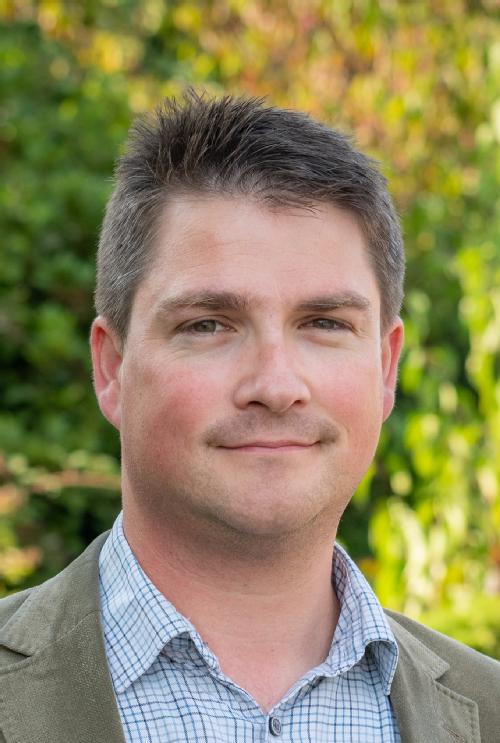Prof. Nicholas Hine
Biography
I am a Professor in the Theory Group in the Department of Physics. My research involves theory and simulation of nanomaterials. I am a developer of the ONETEP Linear-Scaling Density Functional Theory Package, which enables us to perform realistic simulations of large systems comprising thousands of atoms. This allows us to study complex systems such as proteins, heterostructure interfaces, layered materials, molecular crystals, and semiconductor nanocrystals. I am also (more recently) involved in the development of accelerated methods based on Machine Learned Interatomic Potentials.
I am a member of the UKCP Consortium, a High-End Consortium for access to the ARCHER supercomputer, and I am a member of the CCP9 Working Group, and PI of the current CCP9 Flagship Project. I am also a major user of Warwick's local HPC facilities, via the Scientific Computing Research Technology Platform, and the ATHENA system of the HPC Midlands Plus.
PhD Project News
In October 2023, three new PhD projects are underway:
Electronic Structure & Photochemistry of Molecular Iron(III)-oxo Clusters
Ali Safavi is beginning a PhD studentship funded by The Leverhulme Trust, in collaboration with Seb Pike's group in Chemistry.
Machine learning multiscale simulation of photoconductivity in correlated oxides
YC Wong is beginning a new project as part of the HetSys CDT on predicting, explaining and modelling novel behaviours of quantum materials requires a combination of theoretical insight with state-of-the-art multiscale modelling. In the case of complex oxides, displaying both strong electronic correlation and a diverse range of extended and point defects, traditional electronic structure methods encounter severe challenges when trying to model key properties such as photoconductivity and bulk photovoltaic effects. Fortunately, the extraordinary speed and power of machine-learned interatomic potentials provides a brand-new way to gain insight into these systems. This project will design and build multiscale models to understand photoconductivity in SrTiO3, particularly enhancement associated with dislocation cores.
Charting a course towards new light-activated molecules
Zahra Bhatti is starting a PhD studentship as part of the HetSys CDT on light-activated molecules. Many small molecules absorb light. Predicting what happens to them next is a challenging task for computer simulations, but if we could solve this problem we would have a new route to designing new fluorophores for medical diagnostic imaging, new photocatalysts for green synthesis, or new chromophores for harvesting the sun’s energy in solar cells. In this project, we aim to address this challenge by combining excited-state electronic structure calculations and machine-learning to build new predictive models to help us search the entire space of small organic molecules to identify useful (and previously-unknown) light-activated molecules.
Current Projects
My work involves two main strands at the moment, both related by links to theoretical spectroscopy and simulation of large, complex nanomaterial systems. The first area is modelling of chromophores and their interactions with their environment, for example photoactive molecules in solvent, at surfaces, and within biological systems.
I am the author of a new python-based workflow package for theoretical spectroscopy calculations on molecules in explicit solvent, named ESTEEM. It can be used to develop Machine Learned Interatomic Potentials for ground and excited states (based eg on LR-TDDFT) to perform simulations of emission and absorption spectra.
The second area is 2D materials, with the novel emerging field of twistronics being a particular current interest. In recent years I have also worked on energy materials (eg OPVs, singlet-fission materials, TiO2) and biological systems (eg light-harvesting complexes).
Recruitment
I am always looking to recruit excellent students and I welcome enquiries from interested candidates, particularly those with a strong inclination towards theoretical and computational methods, and an interest in simulation of nanomaterials. I am interested in hearing from prospective PhD students, particularly anyone who might be candidates for schemes such as as the Chancellor's International Fellowships. Please contact me if you are interested, and also see the Prospective Students page.
A visualisation of a 9000-atom segment of the Fenna Matthews Olson Pigment-Protein complex:
Other Research
Please do contact me also if you have ideas of your own that are amenable to study with large-scale electronic structure methods!
Teaching
In 2020-21 I am teaching the following modules
- PX423 Kinetic Theory
- PX425 High Performance Computing
- PX911 Multiscale Modelling Methods and Applications I
In the past I have also taught:
Contact details:
Address: Department of Physics, University of Warwick, Coventry, CV4 7AL
Office: PS140
Telephone: (+44) 02476 574415
Fax: (+44) 02476 523376
E-Mail: N.D.M.Hine@warwick.ac.uk

